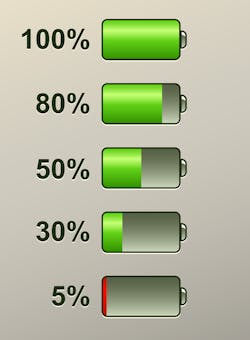Battery management, like military radars and supersonic jets, is a sophisticated technology that’s been out of reach for engineers who don’t have special clearance or deep pockets—until now.
Charging and fuel gauging—at the heart of every battery-management system—are critical components of any mobile or IoT application. Battery performance relies on a high-quality battery model to drive the fuel-gauging algorithm. Extraction of the right model for the chosen battery is difficult, expensive work. In fact, only a few large manufacturers have the resources to develop such models.
The accessibility of accurate models can be a huge barrier to the proliferation of low-volume portable applications. This article presents a disruptive approach to cracking the battery-management barrier with a quick, cost-effective, high-performance solution.
Fuel Gauging for the Few
The release of energy from a battery adds up to nothing less than a controlled explosion. The energy stored in the battery (capacity) depends on load and temperature. Hence, developers recognize the importance of characterizing the battery under various conditions. Once a model tuned to the battery behavior is extracted, it’s loaded into the fuel-gauge chip. This closely supervised process results in accurate gauging and safe battery charging and discharging.
1. It can be time-consuming to maximize battery performance and minimize the state-of-charge (SOC) error while correctly predicting if the battery is nearly empty.

